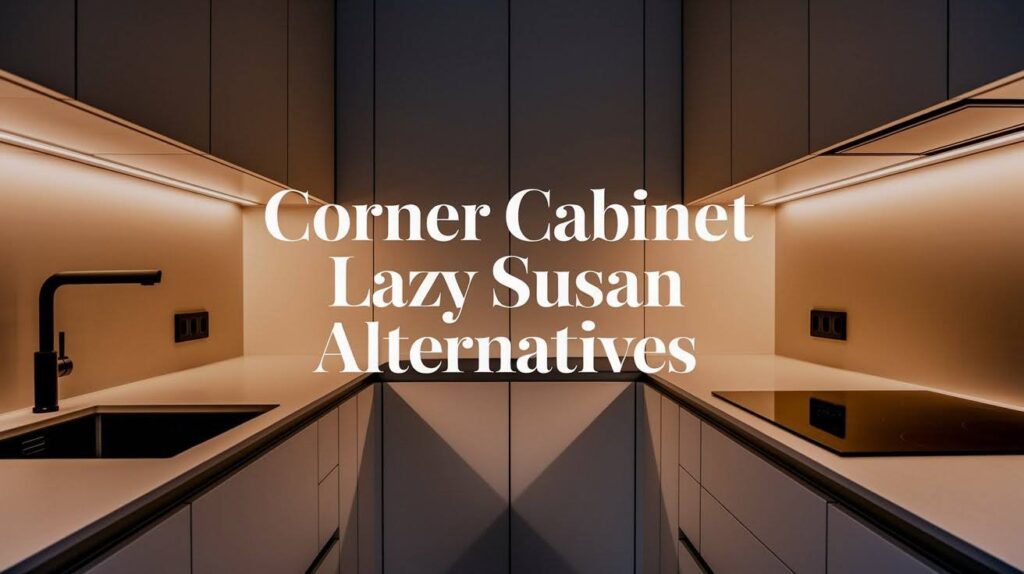Corner cabinets squander a good deal of kitchen space. In the very back, items can get lost. What is it that you need that you cannot reach?
Lazy Susans happen to be imperfect yet still helpful. They break apart and spin awkwardly. Dead zones are left by them.
This guide presents seven choices to replace corner cabinets. These options for the lazy Susan do work. We will cover pull-out shelves, drawer systems, swing-out organizers, and other smart solutions because those solutions can make corner cabinets useful once again.
The best options for storing different cabinet types, how each alternative compares to lazy Susans, also which solution fits your kitchen layout and budget.
That annoying corner cabinet will be repairable when you finish reading.
Why Consider Lazy Susan Alternatives?
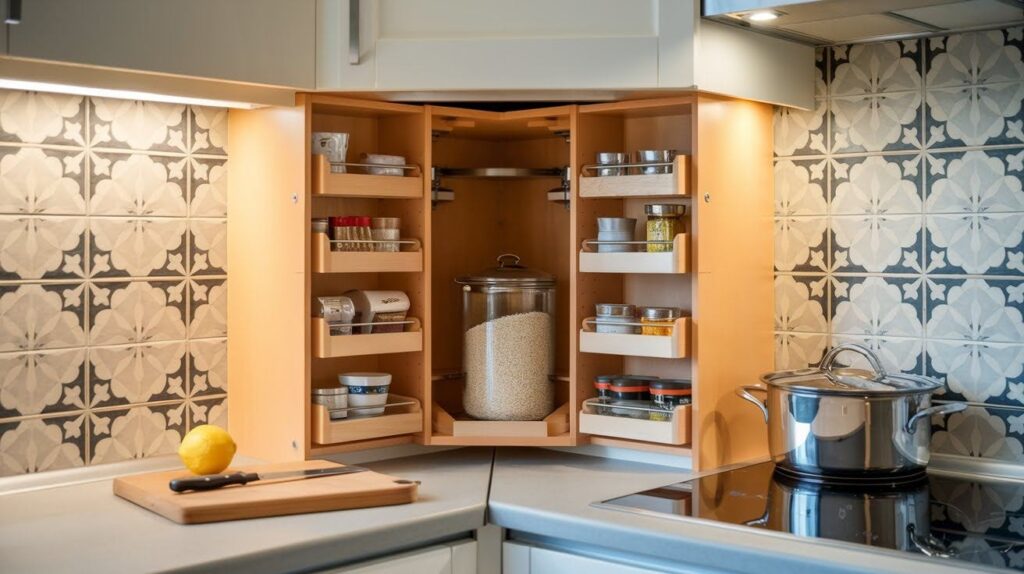
Lazy Susans have been around forever, but they come with real problems. The spinning mechanism leaves dead space in the corners that you can’t use. Items stored near the edges often fall off when you rotate the shelf.
Accessing what you need becomes frustrating fast. You spin the shelf around, hunting for that one spice jar. The moving parts break down over time, and the rotation becomes jerky.
Modern kitchens demand better solutions. Today’s designs focus on maximizing every inch of space. Better alternatives exist that give you full access, use space wisely, and last longer.
List of 7 Corner Cabinet Lazy Susan Alternatives
Seven practical storage solutions that replace lazy Susans, offering better access, organization, and functionality for awkward corner cabinet spaces.
1. Blind Corner Cabinets
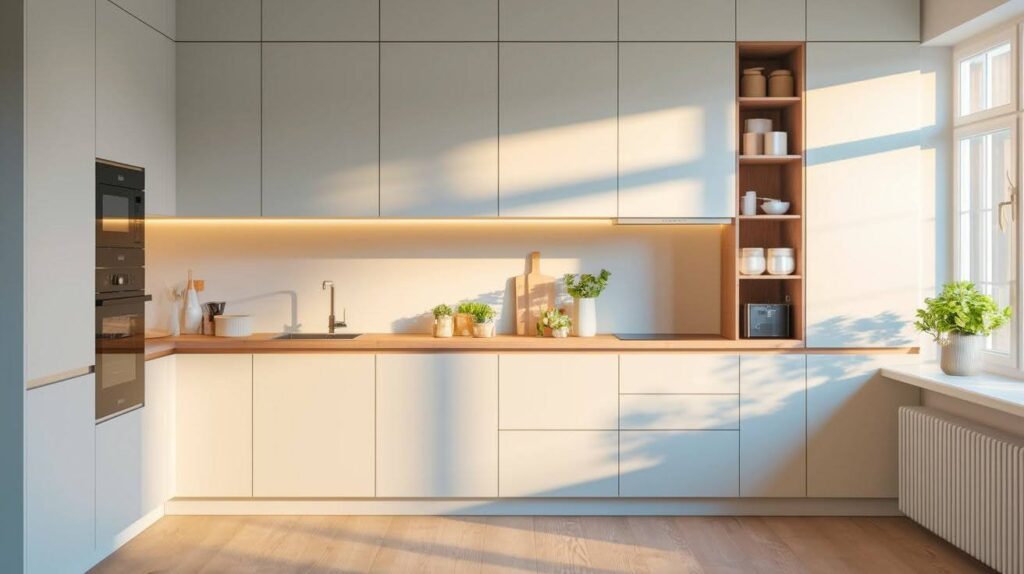
What They Are: Blind corner cabinets have partially hidden storage in the back. The door lines up with your other cabinet doors for a clean look.
Part of the cabinet extends deeper into the corner, where it’s harder to see and reach.
Pros: These cabinets use corner space efficiently without fancy hardware. They cost less than carousel systems and other mechanical options. You can arrange the interior however works best for your needs.
Cons: The back area stays hidden and hard to access. You need to organize carefully or items will get lost. Reaching into the blind spot can be awkward and frustrating.
2. Corner Drawers
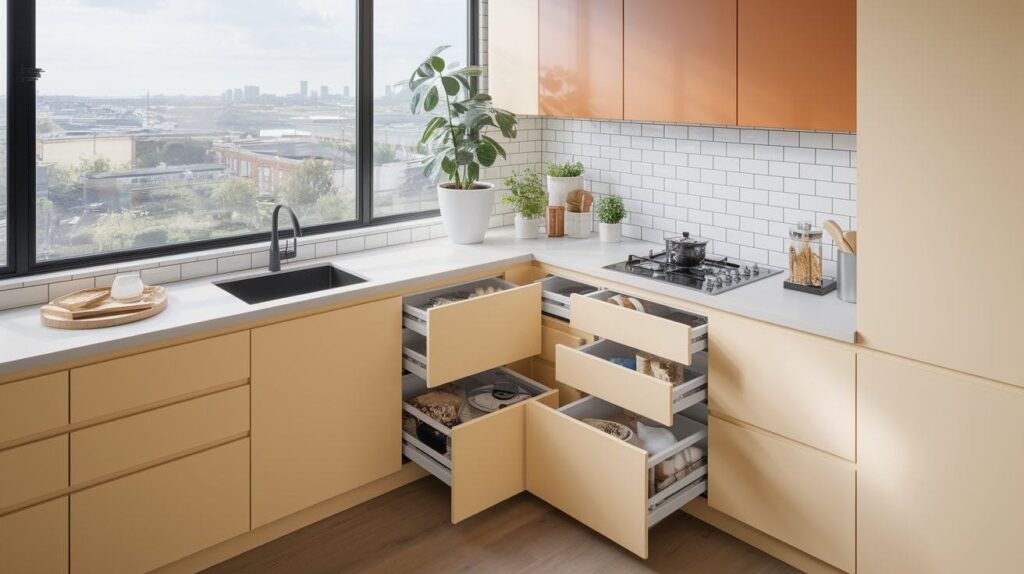
What They Are: Corner drawers are angled units that pull straight out toward you. They open fully so you can see and reach everything inside. The drawer fronts match your cabinet style.
Pros: You get complete access to all your stored items without bending or reaching. These drawers use every inch of corner space effectively. They look modern and sleek in contemporary kitchens.
Cons: Corner drawers cost more than standard cabinets. They need clearance space to open completely without hitting nearby walls or appliances. Most require professional installation to work properly.
3. Swing-Out Shelf Systems
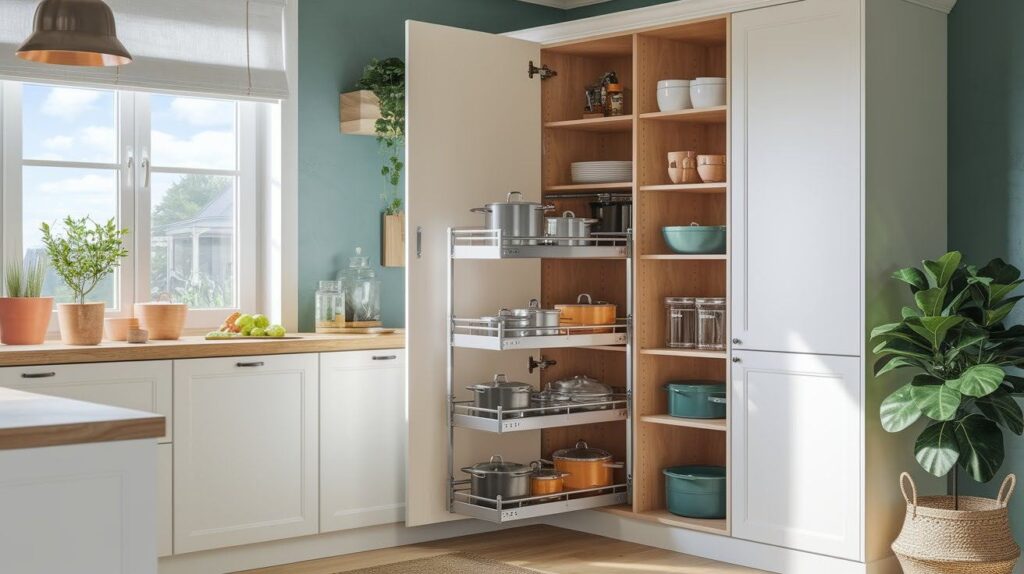
What They Are: These are shelves attached to the cabinet door that swing outward when you open it. The shelves move with the door, bringing items from the back to the front automatically.
Pros: You can see everything stored inside without digging around. They work great for pots, pans, and small appliances. Many systems can be added to existing cabinets without major changes.
Cons: Swing-out systems cost more than basic shelving. You need open floor space in front of the cabinet for the shelves to swing out. Installation can be tricky if you’re not experienced with hardware.
4. Open Corner Shelves
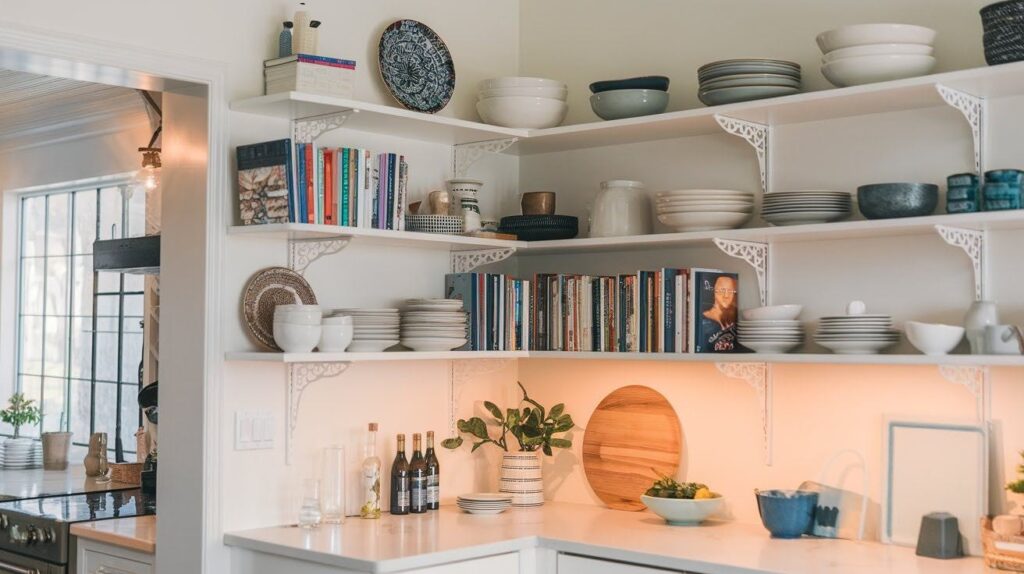
What They Are: Open corner shelves are simple shelves installed in the corner without doors or covers. Everything stays visible and within reach at all times.
Pros: This is one of the cheapest corner solutions available. Access is instant and you can display nice dishes or cookbooks. Open shelves make small kitchens feel larger and more open.
Cons: You can’t store as much as you could with enclosed cabinets. Everything on the shelves stays visible, so you need to keep items organized and attractive. Dust and cooking grease build up on exposed items.
5. Appliance Garages
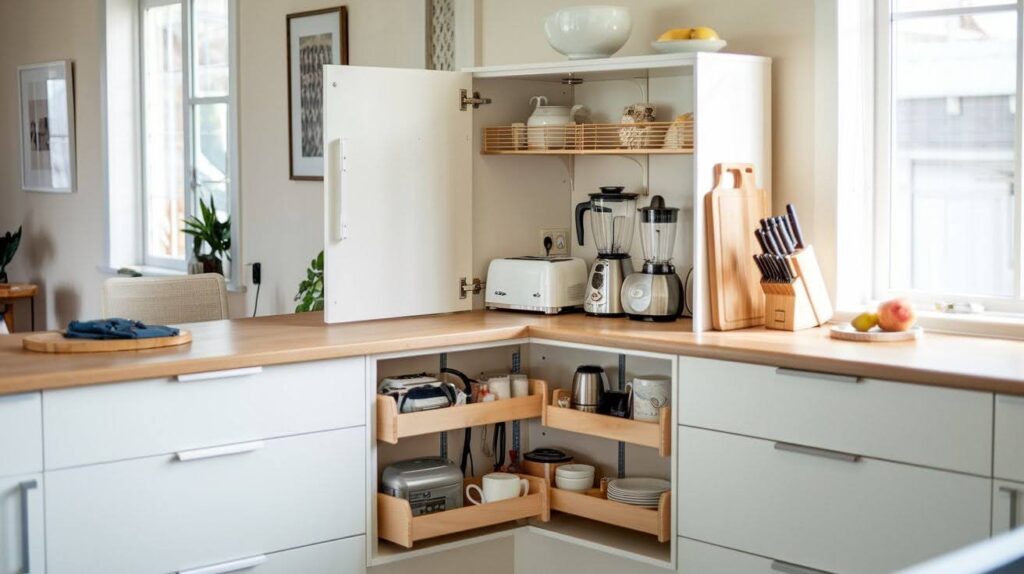
What They Are: Appliance garages are enclosed storage areas inside corner cabinets designed specifically for small appliances. They keep toasters, blenders, and coffee makers hidden but accessible.
Pros: Your countertops stay clear of clutter and appliances. Corner space gets used efficiently for items you need regularly. The kitchen looks cleaner and more organized overall.
Cons: You can only store appliances in this space, not other kitchen items. Installation needs to be precise for doors and outlets to work correctly. The design limits how flexible your storage can be.
6. Corner Sinks
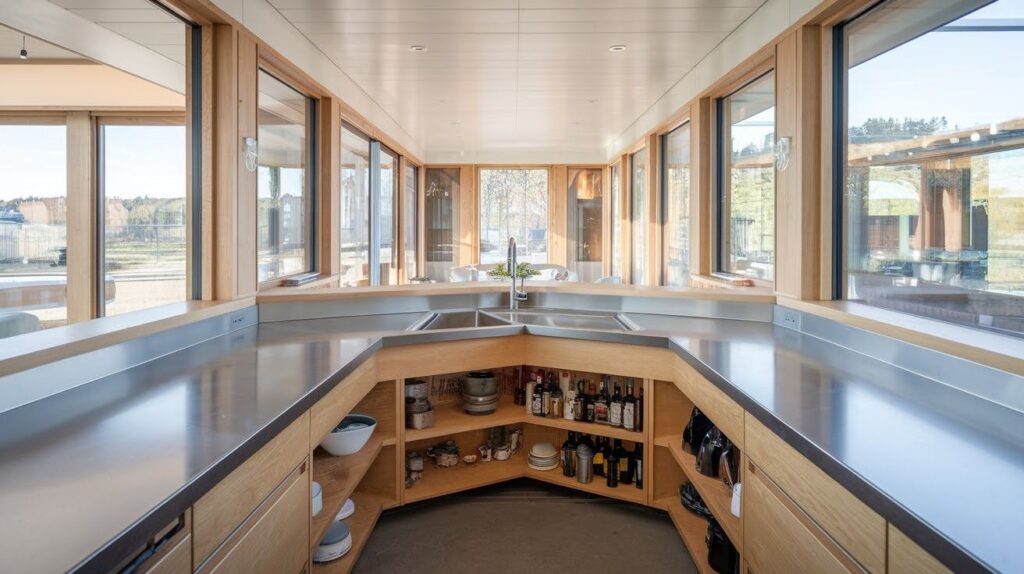
What They Are: Corner sinks sit diagonally in the corner with specialized cabinets underneath. The sink placement opens up more counter space along the walls.
Pros: You gain extra countertop space where you’d normally have a cabinet. Corner sinks create an interesting focal point in your kitchen. The angled position can improve your workflow between sink, stove, and fridge.
Cons: Storage space under the sink becomes limited and awkward. Plumbing gets more complicated, and countertop cuts need precision. This layout doesn’t work well in very small kitchens.
7. Corner Ovens
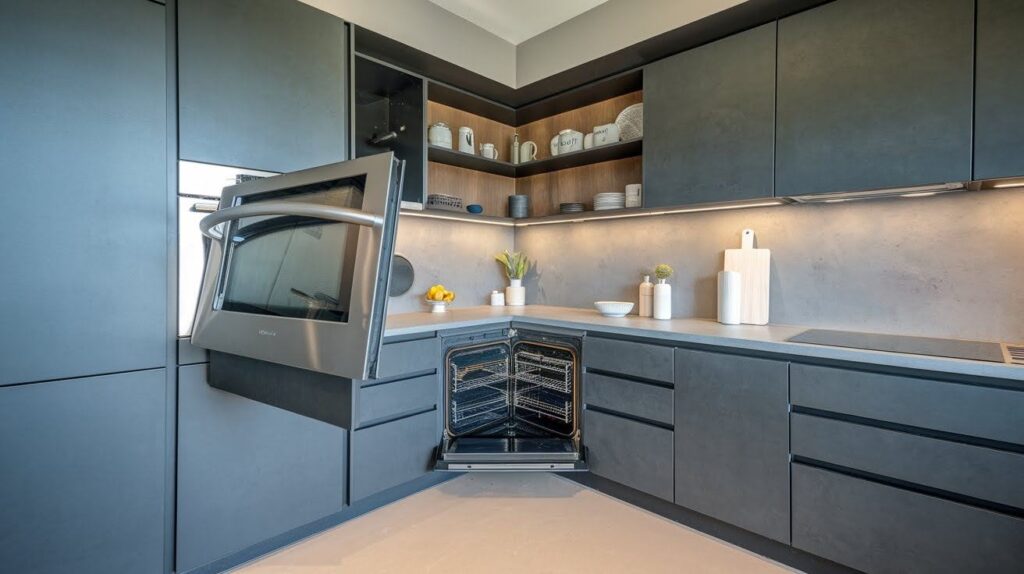
What They Are: Corner ovens are installed diagonally in corner spaces. The oven sits at an angle, creating a unique kitchen layout with the door opening toward the room.
Pros: This layout keeps your cooking area out of main traffic paths. It makes a bold design statement that stands out. The cabinets surrounding the oven provide good storage opportunities.
Cons: Venting an angled oven presents challenges for proper air flow. Adding a corner oven to an existing kitchen is difficult and expensive. The depth can make it harder to reach items in the back of the oven.
How to Choose the Best Corner Cabinet Solution
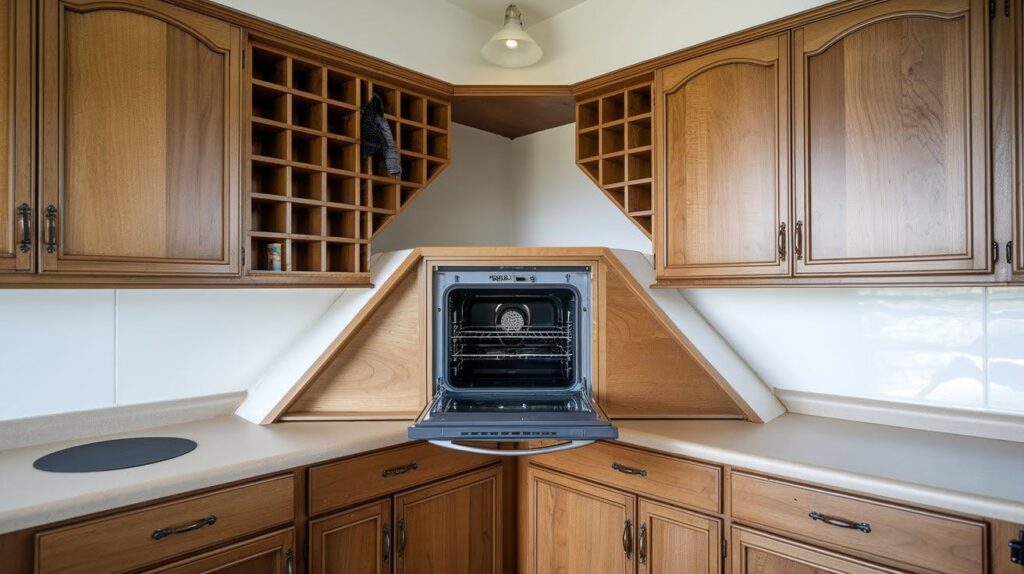
Start by thinking about what you actually keep in your corner cabinet. Items you reach for often need easy access, while less-used items can go in harder-to-reach spots.
Your corner solution should match your kitchen’s look. Modern kitchens work well with sleek corner drawers, while traditional spaces might suit swing-out systems better.
Corner solutions range from cheap to expensive. Factor in installation costs, too. Some options need professional help, while others work as DIY projects.
If you’re planning a full kitchen remodel, talk to a professional first. Designers know which corner solutions work best for different layouts.
Conclusion
Corner cabinets do not have to be frustrating sources of so much stress anymore. Real options that function in a better way for different needs as well as budgets are available now. These seven choices offer real solutions for corner cabinet turntables.
Cooking becomes a lot easier at this time. I have seen it can help one to reach what one needs. Visit showrooms yourself, then take time to test different systems.
Feel the drawers or the shelves swinging out, then see what feels right.
Are you ready now to fix your corner cabinet? Share which solution you consider within the comments below.
Frequently Asked Questions
What is the best alternative to a lazy Susan in a corner cabinet?
Corner drawers and swing-out shelf systems are the most popular alternatives. They provide full visibility and easy access without the spinning mechanism.
Are corner drawers worth the extra cost?
Corner drawers cost more upfront but maximize storage and accessibility. If you use your corner cabinet frequently, the convenience makes them worth it.
Can I install a swing-out shelf system in my existing cabinet?
Yes, many swing-out systems are designed to retrofit into existing corner cabinets. You’ll need to measure carefully and may need basic tools.
What’s the cheapest corner cabinet solution?
Open corner shelves are the most budget-friendly option. They require minimal materials and easy installation, though they offer less storage.
Do corner sinks reduce storage space significantly?
Yes, corner sinks limit storage underneath due to plumbing requirements. However, they free up valuable counter space along your kitchen walls.

